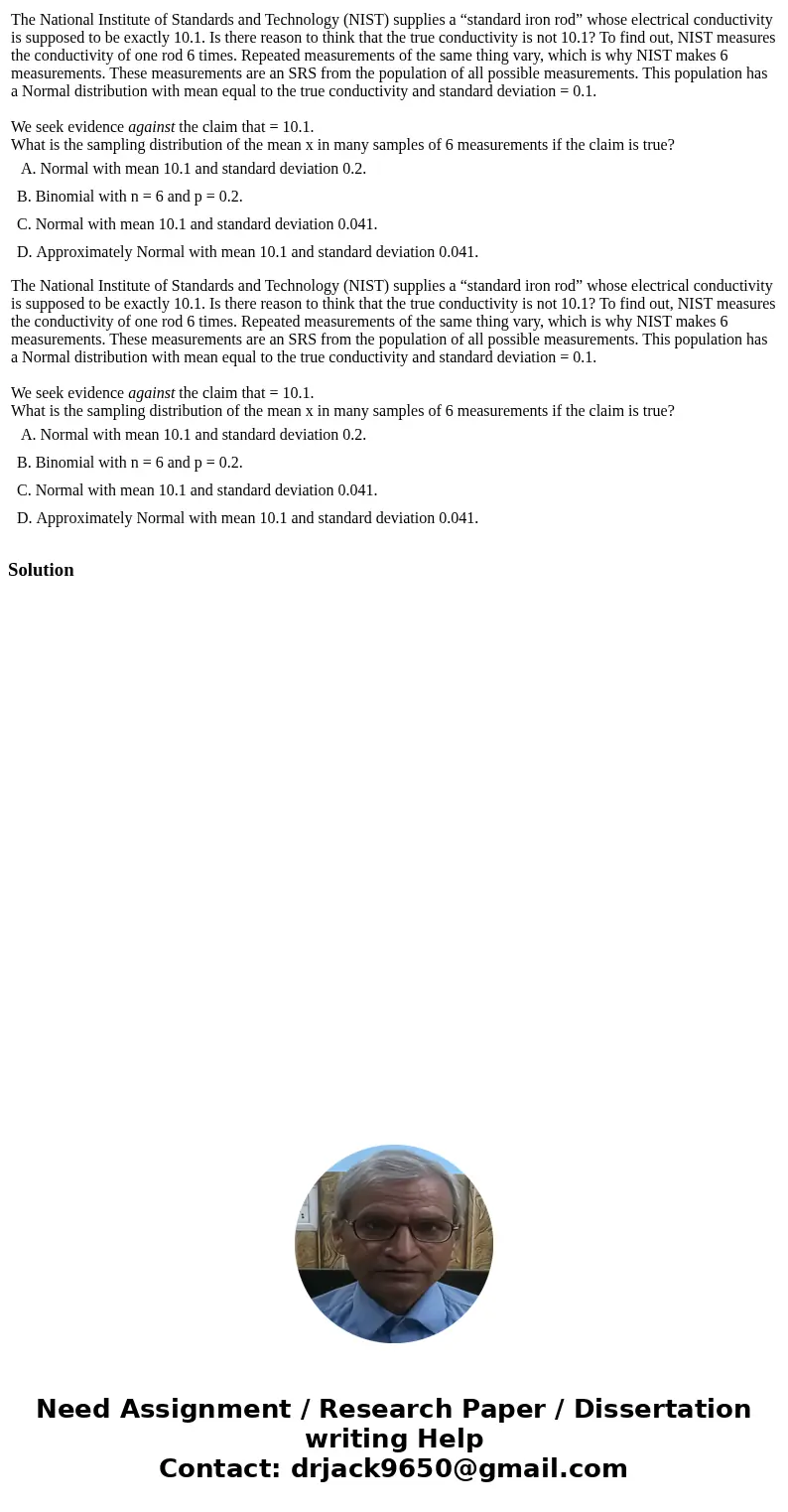The National Institute of Standards and Technology NIST supp
| The National Institute of Standards and Technology (NIST) supplies a “standard iron rod” whose electrical conductivity is supposed to be exactly 10.1. Is there reason to think that the true conductivity is not 10.1? To find out, NIST measures the conductivity of one rod 6 times. Repeated measurements of the same thing vary, which is why NIST makes 6 measurements. These measurements are an SRS from the population of all possible measurements. This population has a Normal distribution with mean equal to the true conductivity and standard deviation = 0.1. We seek evidence against the claim that = 10.1. What is the sampling distribution of the mean x in many samples of 6 measurements if the claim is true?
| ||||||||||||
| The National Institute of Standards and Technology (NIST) supplies a “standard iron rod” whose electrical conductivity is supposed to be exactly 10.1. Is there reason to think that the true conductivity is not 10.1? To find out, NIST measures the conductivity of one rod 6 times. Repeated measurements of the same thing vary, which is why NIST makes 6 measurements. These measurements are an SRS from the population of all possible measurements. This population has a Normal distribution with mean equal to the true conductivity and standard deviation = 0.1. We seek evidence against the claim that = 10.1. What is the sampling distribution of the mean x in many samples of 6 measurements if the claim is true?
| ||||||||||||
Solution

 Homework Sourse
Homework Sourse